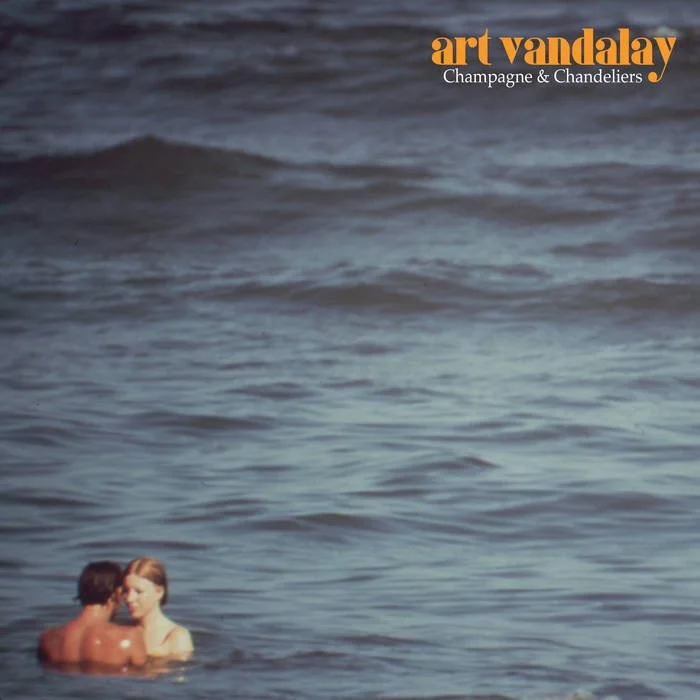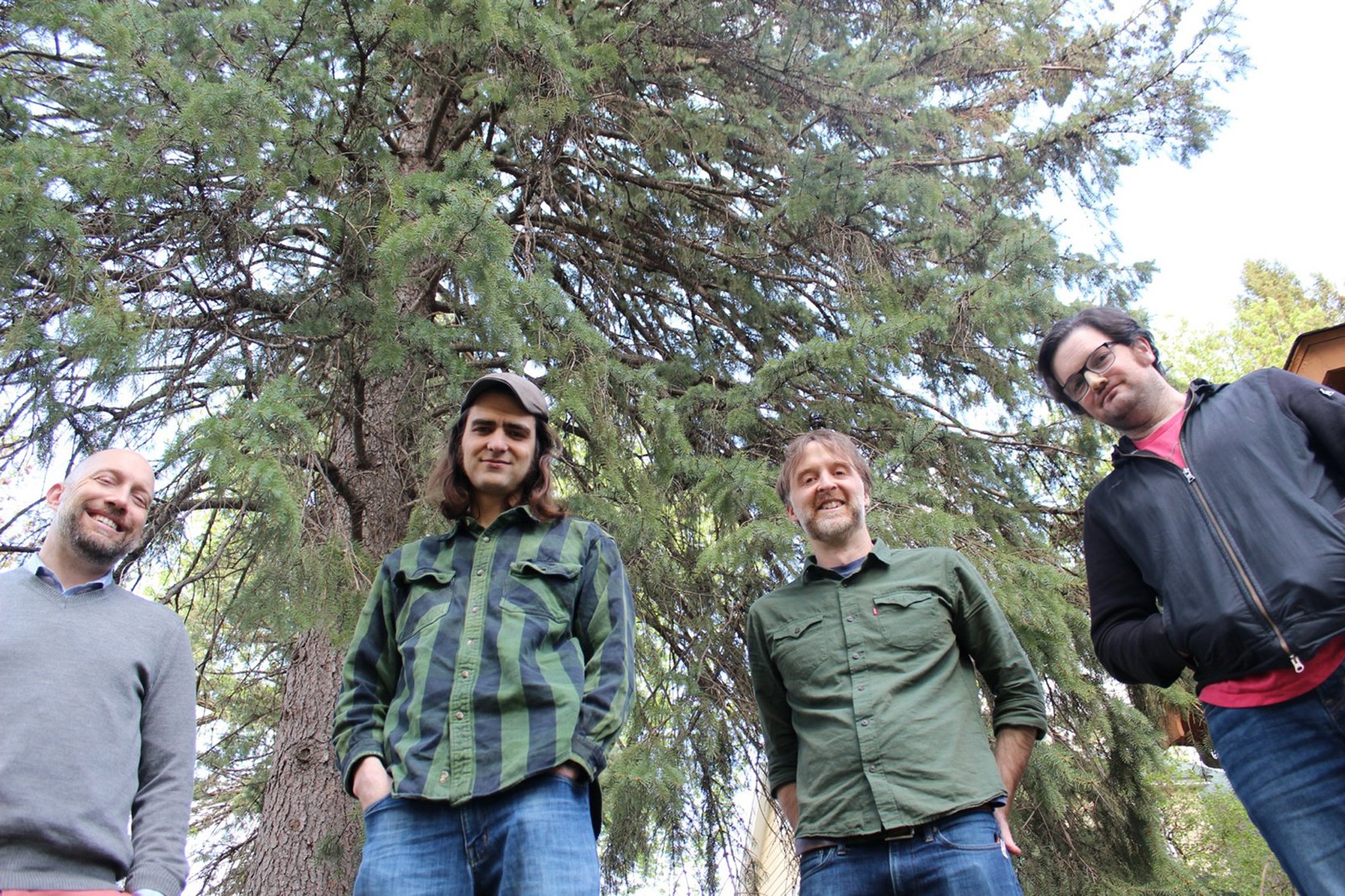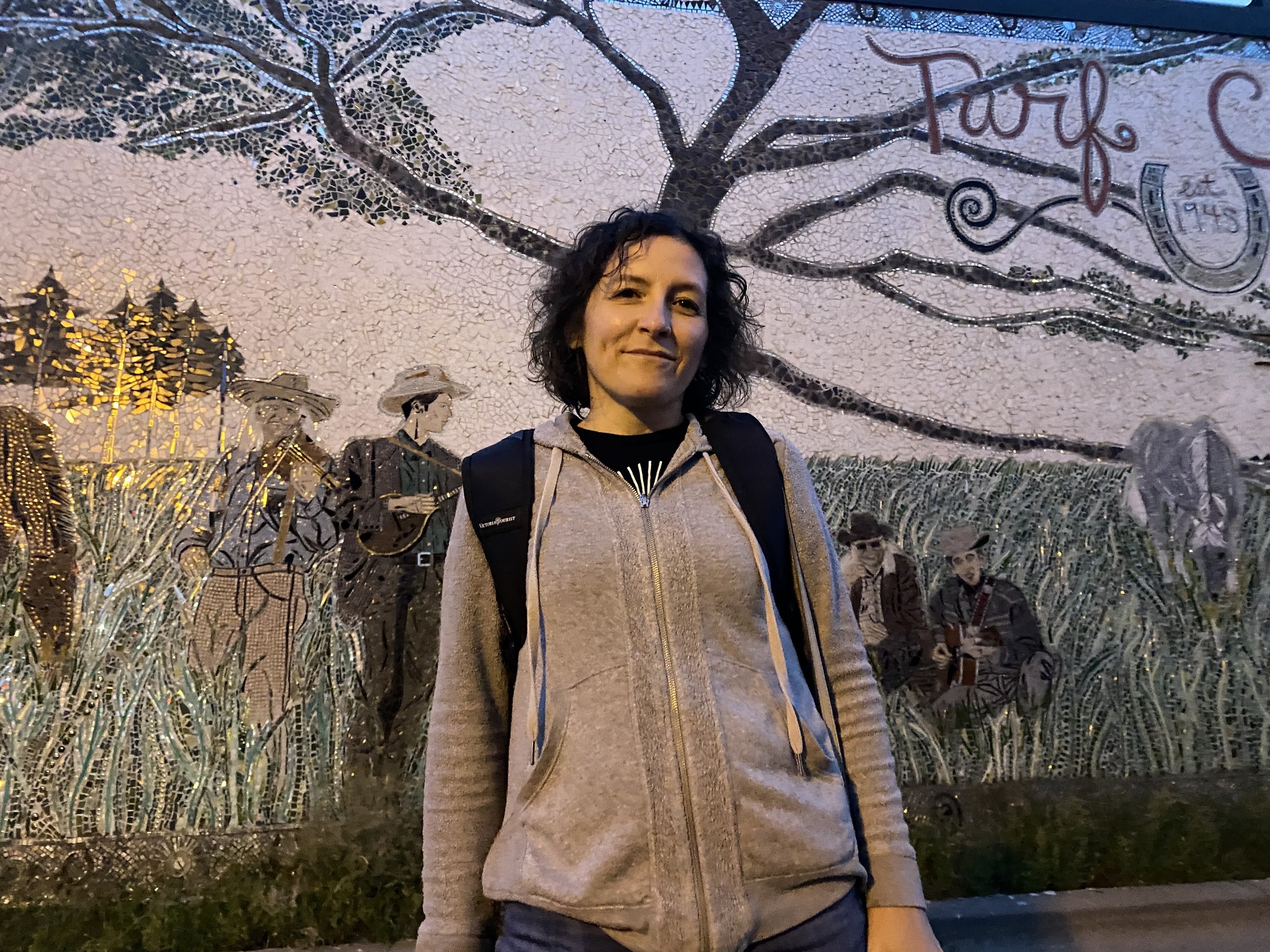Artist Q&A: Brandon Henry of Art Vandalay
As the Americana rockers prepare for a long-delayed album release show, the band’s founding member shared his thoughts about their recent record Champagne & Chandeliers and more.
It’s been a rollercoaster couple of years, but Twin Cities Americana rockers Art Vandalay are preparing for a show to celebrate the release of their 2021 album, Champagne & Chandeliers, this week! We talked to front man Brandon Henry about Art Vandalay’s origins, the inspiration behind their fresh, fluid roots-rock sound, and the upcoming concert at Aster Café in Minneapolis.
Carol Roth: You’re from Oklahoma originally. What brought you to Minnesota and what keeps you here?
Brandon Henry: I came to go to school at St. Olaf College in Northfield. After I graduated, I decided to stay and see what would happen. I fell in love with the music scene here and fell in with a solid group of friends. I attended McNally Smith for recording and production and worked at a music label and just became more and more immersed in Minnesota music. I’ve now lived here longer than I was in Oklahoma.
CR: Tell us when and how Art Vandalay got together.
BH: Art Vandalay started as a solo project for me in 2007 when I started playing out in coffee shops and such. The band came together very organically, which I think has helped us continue performing over the years. First, I asked Calvin Keasling to sit in on drums for a gig I was a part of at the old 400 Bar. It was such a good show that we kept playing together. Then Ben Cook-Feltz played on a couple of gigs on keys and joined the band. Finally, Drew Stevenson joined on bass in 2014. We had shared a couple of bills with the band he was in, and he asked if we wanted a bass player.
CR: This is your first album in nine years! What caused the break, and what got you back in the studio?
BH: I didn’t really intend to take that long a break; life unfolded and pushed my energy in other directions. But in hindsight, I don’t think the songs were there. Some of the songs on Champagne & Chandeliers wouldn’t exist if we hadn’t waited. Also, I wanted to record in a studio instead of various basements and apartments, so we had to save money. We recorded this album in spring 2019 with plans to put it out in the spring/summer of 2020, but we all know what happened that year, so we waited and released it in August 2021.
CR: Your postponed album release show is coming up soon—tell us about it!
BH: We had a January 2022 date set for the release show, but Omicron was on the rise and the headlines were looking more and more bleak, so we decided to reschedule it. We’ll finally celebrate this album with a full band show on Saturday, April 9th at the Aster Cafe with j. bell & The Lazy Susan Band. It’s gonna be a lot of fun to celebrate this album and see some friends at one of our favorite places to perform!
CR: I can see why one reporter called this album a “sonic feast”—it runs the gamut between fun rock ’n’ roll; some moodier, even slightly psychedelic stuff; and a waltz that’s like a cross between a country ballad and a drinking song. Did you plan to have such an expansive sound on the record?
BH: When I’m writing, I try to change up the feel of a song just to see what works best. Sometimes it’s a waltz, sometimes it’s straight-ahead rock or folk, or I’ll start playing a chord that I don’t know but sounds cool. This keeps it interesting for me, the band, and hopefully the listener. I like to listen to a lot of different kinds of music and I’m sure it seeps into my music one way or another. When we finished the album, I was really happy with the way these songs all fit together.
CR: Speaking of that waltz, I love “Eye of the Beholder.” I like how it describes the live music experience as seen by the performer, venue staff and audience members. And I love the idea that some songs can mean nothing even if you enjoy them, while others can literally change your life. Talk about the inspiration behind that one.
BH: I’d had the opening line in the song for years and couldn’t come up with anything else, so I set it aside. Eventually I dug up the song again and tried to describe as best I could the feeling of performing in front of people.
Looking at the audience, it can be hard to figure out if people are enjoying your set or not. Sometimes you do feel like a “backup to their pitcher of beer.” But then after a set, someone may come up to you and tell you how much they enjoyed your set or a specific song. This could have been the same person you thought wasn’t listening. You just never know. I really like the idea of a song having a different meaning to everyone who hears it.
CR: Let’s talk about the meaning behind “Architects.” It has a kind of moody trippy vibe for me—sometimes I was reminded of Jefferson Airplane’s “White Rabbit.” The imagery in it is dreamlike (or rather nightmarish) but I interpreted it as a statement on politicians fomenting unrest and division. Did you have a specific meaning you wanted listeners to come away with or is it designed to be interpreted any number of ways?
BH: That’s exactly what the song is about! I wrote it at the “conclusion” of the Iraq War thinking of the people who are behind planning for war. Even though that was my inspiration, I wanted to keep the lyrics open enough that you could apply them to other situations where you feel people are behind the curtain pulling the strings.
CR: Is that indicative of your usual approach to songwriting?
BH: Yes, for the most part. Usually, it’s a specific event or idea that inspires the song but, as I’m writing it, I try to think of ways to make it relatable enough that whoever is listening to the song can interpret it in their own way. Those are the songs that I like to listen to.
CR: What tracks on the record are you especially into right now?
BH: I really like “Architects.” The song has this cool, dark vibe to it that really came together in the recording. We added this dirge-like piano part to the verses that really gave it an ominous feel. “Architects” really came to life on the record and I love playing it live with the full band!
The song “Never See You Again” was a co-write with my good friend and folk singer-songwriter Jaspar Lepak. She suggested changing the hook of the chorus from “it’ll be alright” to “it’ll be too soon,” which just made the song. It’s amazing how one word can change the entire feel like that. I love the energy of this track on the album, and it’s another one of my favorites to play live.
CR: You have one cover on the album, “Angel & Delilah”—that always makes me curious. Why did you choose to cover this song?
BH: This one has been in our live show for a while and it really fits the feel of the other songs. It’s a fun one to play so I thought we should record it. I’ve always liked the imagery of the song about a dysfunctional relationship. It’s written by Eliza Gilkyson, an amazing songwriter from Austin, Texas. She has a way of taking dark heavy subjects and wrapping them in catchy lyrics that really paint a vivid picture in your mind.
CR: Who are some of your biggest influences—what musicians inspire you or inform your own sound? Who do you listen to for fun?
BH: Some of my biggest inspirations are Tom Petty, John Prine, Wilco, Eliza Gilkyson and Chuck Prophet. I really like their approaches to songwriting and performing. Their styles are fairly different but the imagery, storytelling and hooks in their songs are so strong that their music is a guide for what good songs sound like.
There are also a number of Oklahoma songwriters who have really inspired me musically. I was really into Cross Canadian Ragweed in the early 2000s and their song “Jimmie and Annie” was what first inspired me to write songs. JJ Cale, John Moreland, Travis Linville and Mike Hosty are Oklahoma musicians who have informed my music as well.
Lately, I’ve been on a big jazz kick, listening to Lionel Hampton, McCoy Tyner, Kenny Burrell, and the Delvon Lamarr Organ Trio. I don’t how it started but I’ve been enjoying listening to music that’s out of my usual wheelhouse. One way or another, I’m sure it all makes its way into my songs.
CR: Anything else you’d like to share about your album?
BH: The photo on the cover of Champagne & Chandeliers is by renowned Texas photojournalist Blair Pittman. In 1972, the Environmental Protection Agency embarked on a national photo project called ‘DOCUMERICA’ to capture changes in America’s physical and cultural environment. Pittman was one of the photographers selected. I came across the photo years ago and I’ve always been intrigued by the couple in the water; I thought the amount of space would make a captivating album cover.
The actual photo (and all the photos of the DOCUMERICA series) are housed at the National Archives in Washington D.C. A big thanks goes to the kind folks at the Archives who helped me obtain a digital copy of the actual photo and permission to use the image.
CR: With all the humility that I’ve learned from being in a pandemic, what are your plans for the rest of this year? What’s next for Art Vandalay?
BH: Well, I’m working on finishing a live album that we recorded at The Tavern of Northfield in 2018. I had planned to put it out a few years ago, but the task of sifting through a year’s worth of live tracks and mixing them was too daunting at the time. I spent part of the winter of 2021 culling through what we had, put together the tracks for an album, and mixed them in February ‘22 to mix them. We’ll put it out in the fall. We played at The Tavern for close to a decade and it was a really special place, so I’m happy we were able to capture some of our performances and showcase the band performing in one of my favorite venues.
Carol Roth is a full-time marketing copywriter and the main music journalist and social media publicist for Adventures in Americana. In addition to studying the guitar and songwriting, Carol’s additional creative side hustle is writing self-proclaimed “trashy” novels under the pseudonym T.A. Berkeley!




